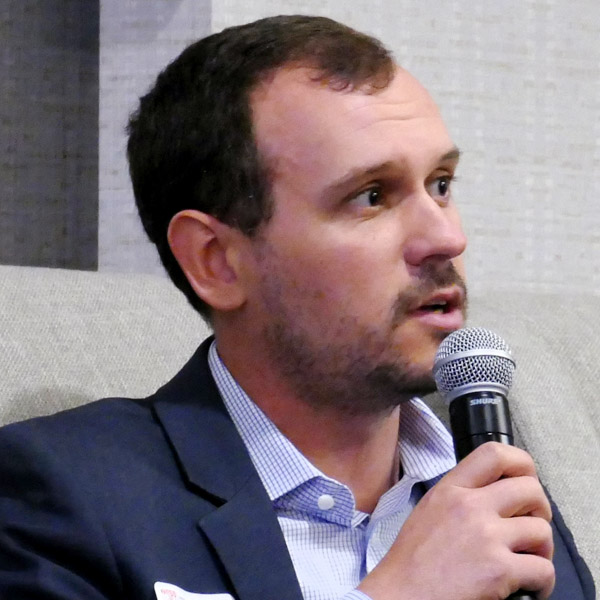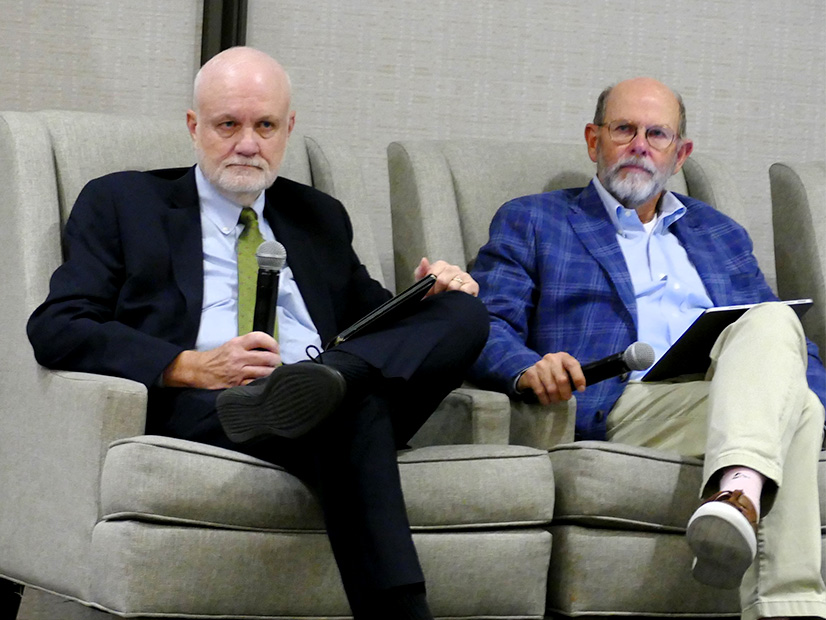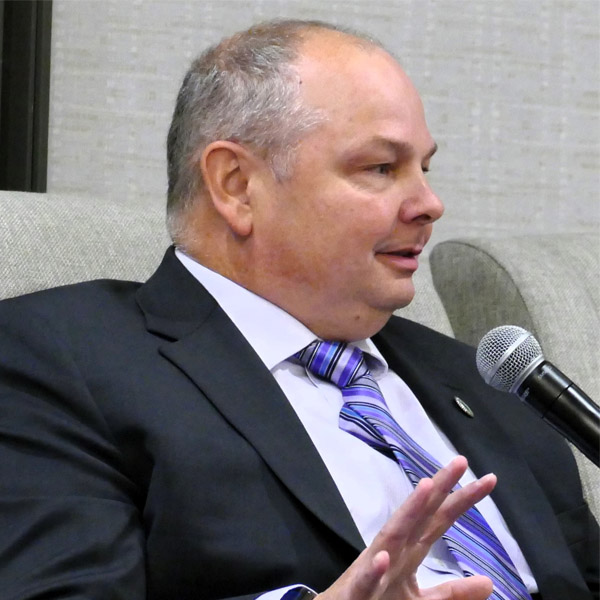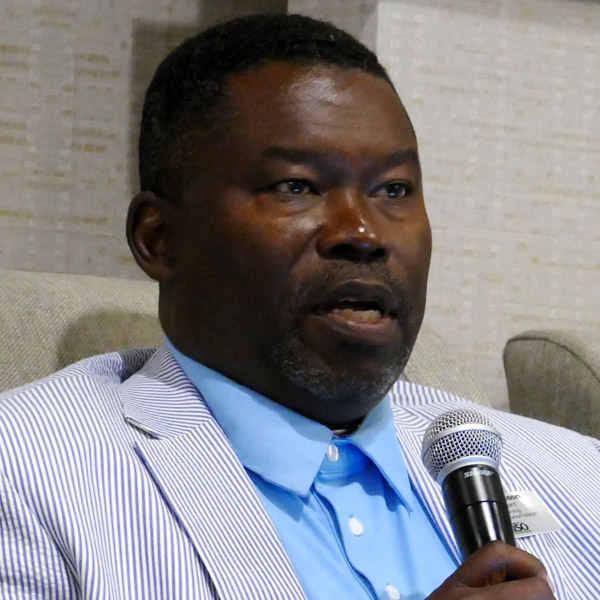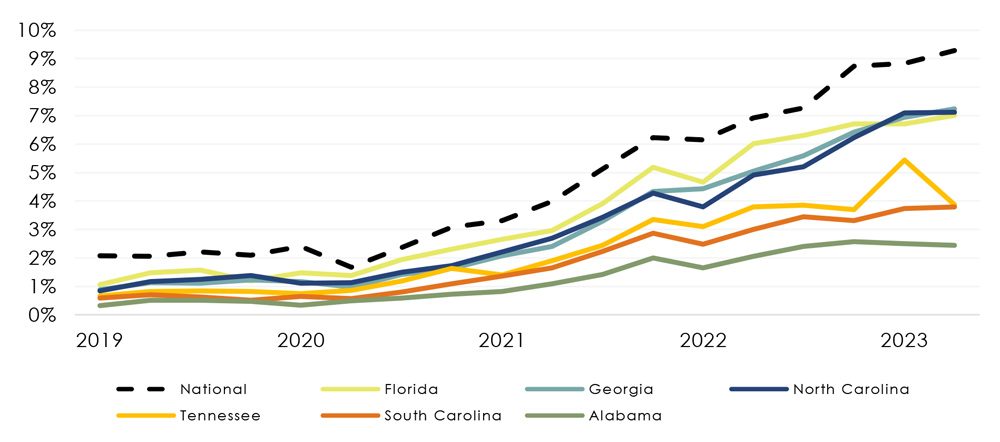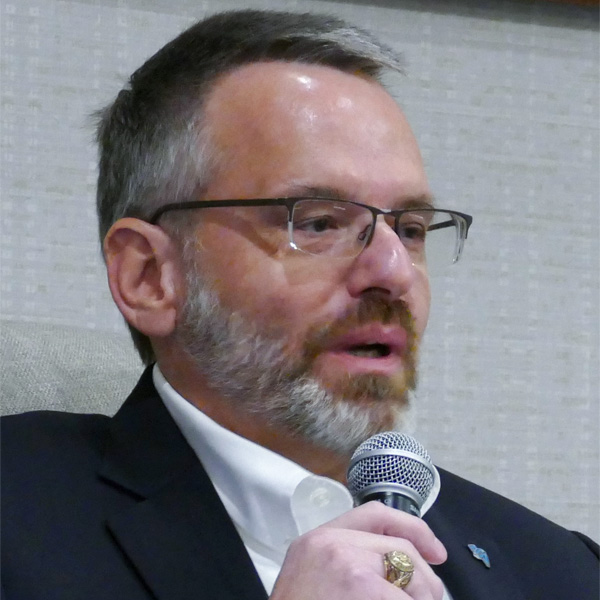DFW AIRPORT, Texas — Keeping the lights on has long been a simple proposition for grid operators. Look at historical demand, add in growth expectations and ensure you have enough generation available to meet that demand.
No more. With older thermal plants retiring or breaking down and being replaced by a flood of more variable renewable resources, grid operators need a more comprehensive focus to ensure they have enough capacity and reserves to keep the system in balance.
SPP last week invited federal and state regulators, academics, market participants and other stakeholders to its inaugural Resource Adequacy Summit. There, they discussed the events that have led the industry to this juncture and the actions necessary to improve the grid’s reliability in the face of enormous change.
“This is the first opportunity we’ve really had to kind of open up a stakeholder, customer and just simply interested party dialogue on a very important topic,” SPP COO Lanny Nickell said in kicking off the Thursday summit.
FERC Commissioner Mark Christie likened the current state to that of the Great Depression, when President Franklin D. Roosevelt said the country was facing a rendezvous with destiny.
“We’re at a very critical time … reliability means, ‘Are the lights going to stay on?’ That’s what it means to the general public,” Christie said. “Are the lights going to stay on? We’re really at a point where that’s coming into serious question. Are the lights going to stay on?
“Right now, when it comes to the reliability of our grid, the United States is facing a rendezvous with reality. Reality is just around the corner. You may think you can avoid it for a while, but reality will track you down. And reality is tracking us down when it comes to the reliability of our grid,” he added.
Testifying before the Senate’s Energy and Natural Resources Committee in May, Christie told lawmakers the grid is facing “potentially catastrophic consequences.” He said he was not trying to be melodramatic. (See Senators Praise Phillips, FERC’s Output at Oversight Hearing.)
“We were not trying to get a sound bite out there into the media. I used the term ‘catastrophic’ because when we have multiple-day outages … that’s catastrophic by any definition. People die if it’s a cold-weather outage, and so that is catastrophic.”
The core reason, Christie said, is not necessarily the vast amount of wind and solar generation that is being added to the grid. It’s the subtraction of coal, gas and other dispatchable thermal resources at a pace that is unsustainable, he said.
“The first rule of holes is if you’re in one, stop digging,” he said. “If the fundamental problem we’re facing is we’re shutting down dispatchable resources far too prematurely, then the answer is to stop shutting down dispatchable resources far too prematurely.”
Christie brought receipts with him. He said PJM forecasts the loss of 40 GW of mostly dispatchable capacity by 2030. He said MISO expects to be 9 GW short by 2028. He noted an earlier presentation from Nickell saying SPP has installed 24 GW of wind and solar in recent years but has lost 8 GW of dispatchable resources.
“And by the way, that is before the EPA came out with the power plant rule, which is going to make that number even worse, as every RTO knows,” Christie said. “The numbers don’t add up. You lose 8 gigs of dispatchable and you pick up 24 gigs of wind and solar, [you think] you’re fine right now. You’re not fine, because as we all know, a megawatt of nameplate wind and solar is not equal to a megawatt of nameplate coal or gas. It’s just reality.”
“There’s really no reason why we should be retiring perfectly good resources in this country,” said Zachary Ming, a director with San Francisco-based consulting firm Energy and Environmental Economics (the folks behind ERCOT’s market redesign).
“We should be focusing on building as many new resources, primarily renewables and storage, and keeping the firm dispatchable resources online that we have. That is both going to maximize affordability, and it’s going to maximize environmental benefits as well,” Ming said. “You reduce emissions by building renewable resources that come first in the dispatch order and will dispatch ahead of dispatchable resources. All building renewables will do is allow us to use the dispatchable resources less, but renewables have limited contributions to reliability. So, it doesn’t mean we can retire the resources. It just means that we can use them less. They will have less emissions, and they will have environmental benefits, and they’ll still stay there for reliability.”
“We’re facing reality very, very simply. I think everybody knows that,” Christie said. “The question is, is there going to be the political will to make a turn in policy and recognize that we’re not going to get to where everybody wants to get, which is a lower-carbon grid, without reality being part of the equation, because reality will track you down. We’re headed to some bad outcomes and none of us want to be around when those outcomes hit, because that’s when the finger-pointing starts.”
Sitting next to Christie, NERC CEO Jim Robb said the industry’s ability to conduct resource planning with a “highly variable intermittent generating system” will define the industry’s next 10 to 15 years.
“That’s the challenge that’s in front of us, and it’s not our grandfathers’ resource adequacy problem,” he said, noting NERC would like to hold an event similar to SPP’s. “I think we have to recognize that we take constructs that we all grew up with and we’ve been trying to modify them to adapt to a system that’s just fundamentally very, very different than what we grew up with. Whatever [resource adequacy] construct you look at is a very important number, but it’s no longer close to being a sufficient number for planning and operating the system.”
Robb pointed out that the traditional resource adequacy constructs are based on meeting demand during peak hours with enough of a margin to account for the “random independent equipment failures.”
“That doesn’t work anymore,” he said, pointing to what he called “common conditional failures” of the emerging generation fleet that is flush with renewables.
“A wind drought, solar drought, cloud cover, unexpected cloud cover, extreme cold weather affects the ability of large amounts of generation to operate, so this whole notion of kind of random failure being the driver of how much generation we need isn’t sufficient,” Robb said.
Policymakers need to “come to grips” with three questions, he said: how frequently they can tolerate loss-of-load events, how long an event are they willing to tolerate and how much are they willing to pay to prevent them.
“We know we can’t afford a 100% reliable system,” he said. “We’re going to have to make important tradeoffs between reliability and those three parameters [frequency, duration and scale] and how much we will be paid to avoid that. Resilience and reliability is not free.”
Robb said he’s encouraged by recent research into what customers are willing to pay to avoid multiday outages. He said those numbers are “much, much higher” than what he’s seen in the past.
“We’ve taken away the obligation to serve, and in these market areas, we rely on commercial constructs to try to recreate that,” he said. “It’s an imperfect substitute, but we have to figure out how to get the market rules to reward reliability with investments that aren’t going to be naturally paid for during the 98% of the normal periods.”
SPP is taking those steps with several recent changes. It increased its planning reserve margin from 12% to 15% last year and made several tariff changes for load-responsible entities’ deficiency payments and a payment structure based on a sufficiency valuation cure.
Those changes were approved by FERC in April. (See FERC Approves SPP’s Resource Adequacy Changes.)
Buddy Hasten, CEO of Arkansas Electric Cooperative Corp., one of SPP’s LREs, called for fairness in meeting reliability commitments.
“We’re propping up reliability, but we get paid nothing for it,” he said. “When the wind blows hard enough or the sun shines bright enough, we have to pay the market to just keep our resources online to prop up the market to be there for reliability. So when [prices] go negative, I’m paying to keep that resource online.
“We like to play games. You create the rules of the game, and everyone plays it, and it’s all about who can get the lowest cost because we’ve turned electricity into a commodity instead of an essential service,” Hasten added. “At some point, there has to be a financial metric rule, some payments, something somewhere to pay for that reliability. Otherwise, everyone’s going to keep playing the game and just chasing the cheapest electron.”
A nuclear submariner for 20 years, Hasten said he’s very aware of the importance of resource adequacy.
“If you don’t have enough resources, you go to the bottom of the ocean,” he said. “Resource adequacy is life or death. I’d hate to be the person that go to those folks’ home and says, ‘Hey, I’m sorry, you froze to death.’ … 2021 was the first time we sent linemen out and white bucket trucks to go open breakers and put people on the dark. That’s called progress, I guess.”
Several speakers pointed out the role natural gas played during that winter storm. Gas plants without firm fuel contracts — and some with firm contracts — were unable to get those supplies as heating homes took precedent. Other thermal generators simply weren’t prepared for the extreme winter conditions.
Aubrey Johnson, MISO’s vice president of system planning and competitive transmission, said aging plants in the RTO’s fleet also played a role in the 2021 and 2022 winter storms.
“It’s actually a fleet that’s not responsive when you actually need it,” said Johnson, who has a background in power plants. “Working with Southern Co., we used to have real competition about how you showed up during peak season and how well your plants performed. When I look at some of the performance numbers today, I’m kind of shocked. You would spend a lot of time in the principal’s office with those kinds of performance numbers.
“The No. 1 way to ensure resource adequacy is ensuring you have adequate resources,” he added.
Given a chance to provide suggestions to the audience during a lightning Q&A round, Johnson’s message was simple.
“Build. Just build,” he said.
